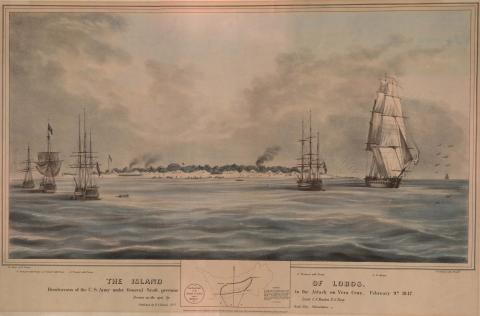Although not as well-known as the land engagements during the U.S.-Mexico War, U.S. naval operations had a profound impact on the outcome of the conflict. The United States exercised complete naval supremacy over both coasts throughout the war, allowing the U.S. Navy to conduct operations virtually at will, disrupting Mexican trade, attacking coastal cities, and transporting and supplying U.S. troops.
In 1846, the U.S. Home Squadron, commanded by Commodore David E. Connor, consisted of eleven vessels--two frigates, two steamers, four sloops, and three brigs. Prior to the outbreak of hostilities, U.S Navy Secretary George Bancroft placed the Home Squadron on high alert in the Gulf of Mexico. Once the war began, the squadron imposed a blockade of Mexican harbors, seizing Tampico without resistance in November.
Along the California coastline, the commander of the Pacific Squadron, Commodore John Sloat, had received orders from Washington to seize Mexican harbors in the event of war. Upon learning that hostilities had broken out along the Rio Grande, Sloat captured Monterey on July 7, where he learned that Colonel John C. Frémont had already raised the flag of the California Republic at Sonoma. Sloat's marines seized the harbor at San Francisco (then known as Yerba Buena) three days later. His successor as commander of the Pacific Squadron, Commodore Robert F. Stockton, acting jointly with Frémont, declared California’s annexation to the United States and organized a new territorial government, appointing himself governor.
The Navy's most important operation was to cover the landing of the army under General Winfield Scott at Vera Cruz, enabling the U.S. Army to open up a southern front that would lead, six months later, to the fall of Mexico City. Some fifteen thousand men, weapons and other equipment from the United States and northern Mexico were shipped by David E. Connor’s Home Squadron to Lobos Island, an island midway between Tampico and Vera Cruz, which had been selected as a rendezvous point for the invasion. On March 3, 1847, the combined force sailed to Antón Lizardo, twelve miles south of Vera Cruz. On March 9, 1847, Scott landed an army of 10,000 men on the beaches south of Vera Cruz--the largest amphibious landing in history up to that time.



